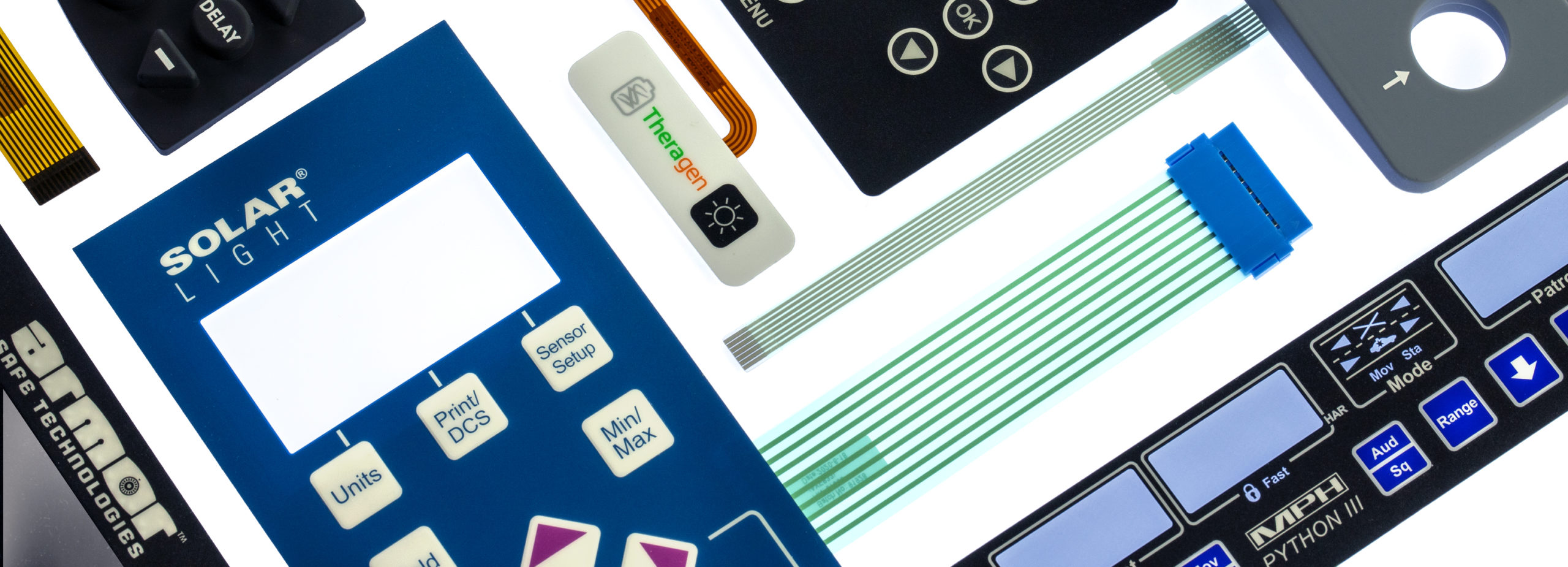Membrane Switch: Reliable, Cost-Effective, and User-Friendly Control Systems
Membrane Switch: Reliable, Cost-Effective, and User-Friendly Control Systems
Blog Article
Understanding Membrane Switches Over: The Trick to Reputable and durable Controls

What Are Membrane Layer Buttons?
Membrane layer buttons are a sophisticated service in the realm of interface modern technology, combining functionality and style effortlessly. These gadgets work as an interface between customers and electronic systems, incorporating numerous parts right into a portable format. Usually constructed from flexible, thin layers of materials, membrane buttons are designed to react to touch, making it possible for customers to interact with machinery and electronic gadgets successfully.
The primary elements of a membrane layer button consist of a published circuit layer, visuals overlay, and a spacer layer that protects against unplanned activation. The visuals overlay can be customized to reflect brand name identity or individual preferences, enhancing looks while making certain functionality. Membrane switches are commonly made use of in numerous applications, including medical tools, consumer electronics, and commercial devices, owing to their toughness and resistance to environmental factors such as moisture and dust.
One of the vital benefits of membrane buttons is their capability to stand up to deterioration, making them perfect for high-traffic environments. In addition, they are lightweight and call for very little space, enabling cutting-edge styles in item advancement. Overall, membrane layer switches over represent a sensible and effective choice for modern electronic interfaces, marrying innovation with user-centric design concepts.
Just How Membrane Switches Over Work
The operation of membrane changes joints on a simple yet effective device that converts user input into electronic signals. When an individual presses the button, the leading layer flaws, permitting a conductive element in the circuit layer to make contact with a matching conductive pad on the bottom of the visuals overlay.
The style of membrane layer switches can vary, but they commonly include domes or responsive elements to supply responses to the customer, boosting the total experience - membrane switch. The products used in membrane switches, such as polyester or polycarbonate, add to their longevity and resistance to ecological factors, including moisture and dust. The published circuits are commonly encapsulated, which protects them from wear and tear over time.
Benefits of Membrane Buttons

In addition, membrane layer buttons are known for their sturdiness. Built from robust products, they are resistant to dust, wetness, and physical wear, which substantially prolongs their life-span contrasted to conventional mechanical switches. This resilience makes them especially appropriate for high-traffic environments and applications needing long life.
An additional significant benefit is the ease of cleaning and upkeep. The smooth surface area of membrane layer changes minimizes dirt build-up and is usually resistant to spills, making them ideal for settings that need frequent sanitization.
Furthermore, membrane buttons use a structured profile, resulting in a thinner layout that can be incorporated right into different devices without including mass. This function not only improves the aesthetic allure yet likewise adds to an extra ergonomic item design.
Applications of Membrane Layer Buttons
Straightforward and flexible, discover here membrane switches find applications throughout a large range of sectors, including clinical gadgets, customer electronics, and commercial tools. In the clinical field, these switches are essential to devices such as analysis equipment, patient tracking systems, and infusion pumps, where dependability and ease of cleaning are critical. Their capability to endure rough atmospheres their explanation and keep capability makes them optimal for such applications.

In consumer electronic devices, membrane buttons are used in items like microwaves, washing machines, and push-button controls - membrane switch. Their streamlined layout permits instinctive user interfaces, improving the total user experience while offering longevity and resistance to damage
Industrial devices likewise takes advantage of membrane layer switches, specifically in control panels for machinery and automation systems. These switches use defense against dust and wetness, guaranteeing consistent performance in tough environments. Additionally, their adjustable functions permit producers to tailor them to details functional demands, enhancing efficiency and functionality.
Selecting the Right Membrane Switch Over
When selecting a membrane switch, it is necessary to take into consideration different aspects that influence performance and suitability for particular applications. The key considerations consist of ecological problems, tactile comments, sturdiness, and layout requirements.
First, examine the operating atmosphere; switches revealed to dampness, chemicals, or extreme temperatures require specific products to make sure longevity and functionality. Next off, assess the need for tactile responses. Depending upon user communication, some applications might take advantage of a responsive action to verify activation, while others may favor a non-tactile style for aesthetic published here factors.
Sturdiness is another essential aspect; membrane buttons ought to be designed to stand up to frequent usage, influences, and abrasion. Ensure the picked switch can sustain the expected lifecycle, specifically in high-usage circumstances.

Conclusion
In final thought, membrane changes offer as essential elements in the layout of durable and trustworthy control systems across different sectors. The versatility of membrane changes permits for customized options that meet particular operational requirements, enhancing their significance in modern technology.
Membrane changes stand for a critical aspect of modern interface style, blending performance with durability in numerous applications.Membrane layer buttons are an innovative solution in the world of user interface technology, combining functionality and design perfectly. Normally built from versatile, thin layers of materials, membrane switches are designed to respond to touch, enabling users to interact with equipment and digital gadgets successfully.
The style of membrane switches can differ, but they typically integrate domes or responsive aspects to supply comments to the individual, improving the overall experience.In conclusion, membrane layer changes serve as vital components in the design of reliable and resilient control systems throughout numerous markets.
Report this page